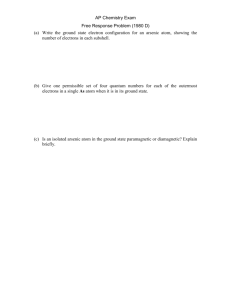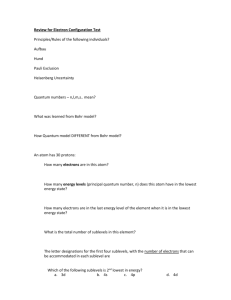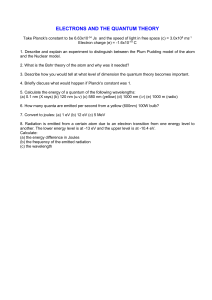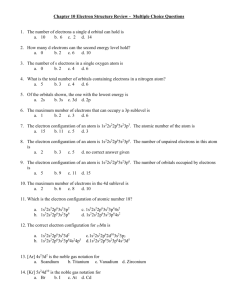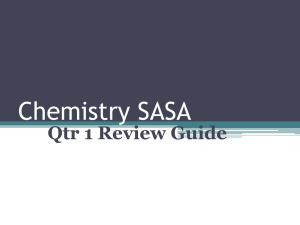Exam #2 – Electrons, Compounds, and Structure
advertisement
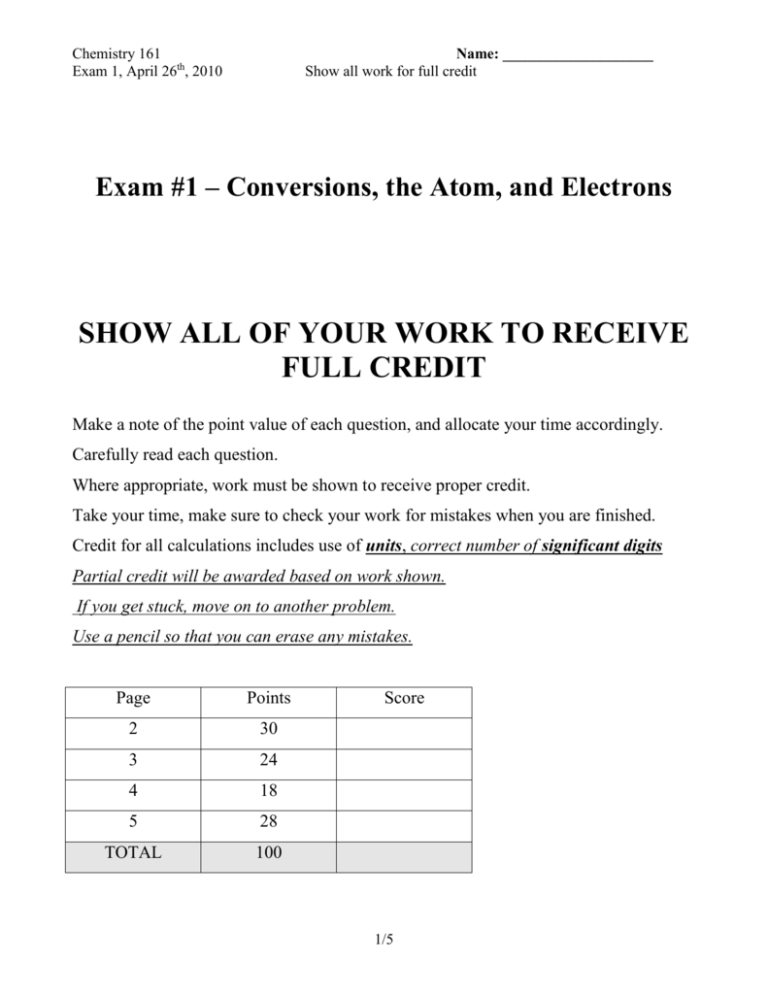
Chemistry 161 Exam 1, April 26th, 2010 Name: ____________________ Show all work for full credit Exam #1 – Conversions, the Atom, and Electrons SHOW ALL OF YOUR WORK TO RECEIVE FULL CREDIT Make a note of the point value of each question, and allocate your time accordingly. Carefully read each question. Where appropriate, work must be shown to receive proper credit. Take your time, make sure to check your work for mistakes when you are finished. Credit for all calculations includes use of units, correct number of significant digits Partial credit will be awarded based on work shown. If you get stuck, move on to another problem. Use a pencil so that you can erase any mistakes. Page Points 2 30 3 24 4 18 5 28 TOTAL 100 Score 1/5 Chemistry 161 Name: ____________________ th Exam 1, April 26 , 2010 Show all work for full credit 1. (12) A car's gas mileage is reported as 1.706 x 105 chains per hogshead. What is this in miles per gallon? Write your answer with the proper number of significant digits. Possible useful relationships: 1 chain = 792 inches (exact) 1 mile = 80 chains (exact) 1 hogshead = 238.5 liters 12 inches = 1 foot (exact) 1 liter = 0.264 gallons 1 mile = 5280 feet (exact) 2. (6) Convert 4.2 m3 to mm3. 3. (6) A particular metal block has a density of 4.21 g/ml. The block weighs 1.1 kg. What is the volume of the block in cm3? 4. (6) Write the complete ground state electron configuration for silver (Ag). Do not use cores to abbreviate your answer. 2/5 Chemistry 161 Name: ____________________ th Exam 1, April 26 , 2010 Show all work for full credit 5. (10) Draw an energy level diagram representing the ground state electron configuration for the ion Fe2+. (Hint: be mindful of which electrons come off first for transition metals) 6. (6) Circle and clearly label the electrons with the following quantum numbers in your diagram above. a. 3, 1, 0, +½ b. 2, 1, 1, -½ c. 2, 0, 0, -½ 7. (3) How many valence electrons do the following atoms have: a. S b. Ag (hint: refer to question 4) c. C 8. (5) How much does 1 average atom of lead weigh, in grams? 3/5 Chemistry 161 Name: ____________________ th Exam 1, April 26 , 2010 Show all work for full credit 9. (8) Fill out the following table with the quantum numbers for all of the electrons in a neutral sodium atom (you may not need every blank, or you may need additional blank spots as necessary): n l ml ms 10. (6) Circle the appropriate atom or ion that a) has the highest ionization energy Zr Re Ga Hf b) is the most metallic Pb W Si Fe c) has the largest atomic radius As Ga B Al 11. (4) How and why does atomic size change across a period on the periodic table (left to right)? 4/5 Chemistry 161 Name: ____________________ th Exam 1, April 26 , 2010 Show all work for full credit 12. (6) Draw the electron cloud, or shape, that represents the following orbitals (relative size counts): 1s 3p 2p 13a. (10) Calculate the energy change (in Joules) and wavelength of light emitted (in nm) for a hydrogen atom electron transition from n = 7 to n = 1. 1 1 2 2 J n n i f ΔE = -2.179 x 10-18 h = 6.626 x 10-34 J•s 13b. (1) Is the photon emitted in question 13a visible to the human eye? 13c. (1) Is the photon emitted in question 13a a part of the Balmer series? 14. (10) How many Joules of energy are there in Avogadro's number of violet (or blue) photons. h = 6.626 x 10-34 J•s 5/5
